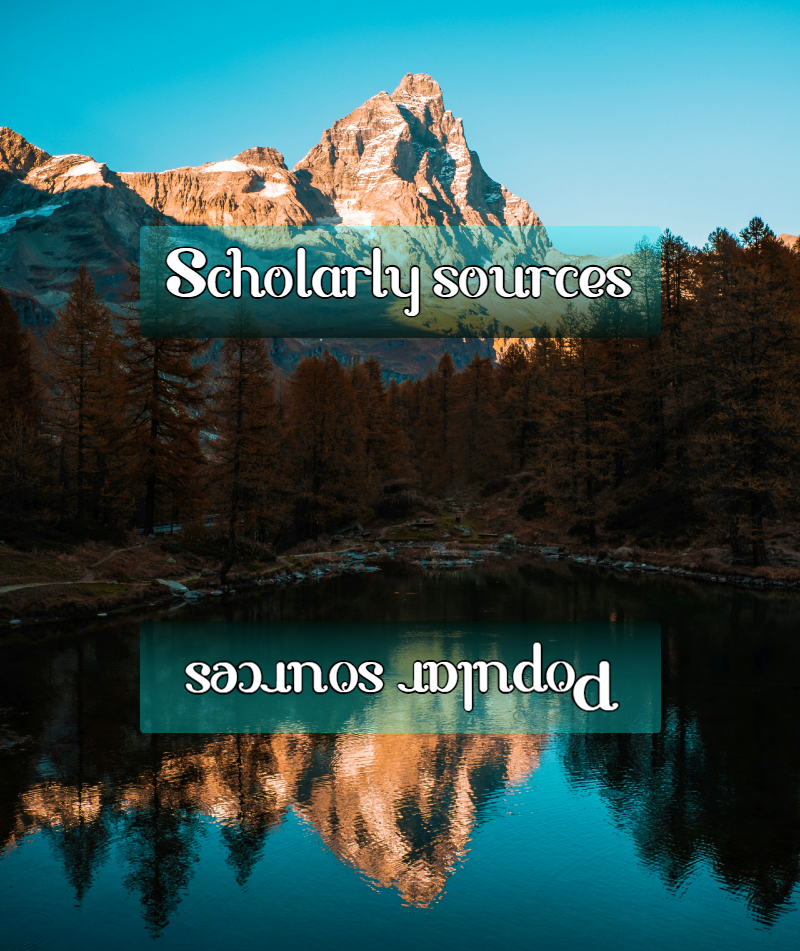The Use of Popular and Scholarly Sources in Research
February 14, 2024| Category: Writing Tips
In the sphere of academic writing, you need to be able to distinguish between popular and scholarly sources to comprehend the vast variety of information one can utilize in research. Both scholarly and popular resources serve distinct purposes. Knowing these differences, you will ensure your paper is based on accurate, credible, and thorough research.
Importantly, scholarly sources provide reliable evidence and detailed analysis that you have to use to support academic arguments and research findings. Consequently, you need to use these sources to be sure that your work meets the set academic standards. On the other hand, popular sources can offer general background knowledge, but they might not have the necessary depth and credibility needed for scholarly writing. Thus, grasping the differences between popular and scholarly sources is essential to choose the most suitable and credible resources for your research effectively.

What are Popular and Scholarly Sources?
Popular sources, namely newspapers, magazines, websites, and social media platforms, offer information to the wider public. They present news or information in a simplified and rather accessible form. The primary objective of popular sources is to inform, entertain, or influence a broad audience, steering clear of in-depth analysis of complex issues. They keep pace with the times, concentrating on contemporary events or trends.
On the contrary, scholarly sources are targeted at specific audience. They encompass journal articles, theses, academic books, and conference papers. These documents are crafted by experts in a specific area to aid other professionals or students in the same or related disciplines. They are characterized by a stringent peer-review procedure, during which fellow specialists assess the work for its quality, precision, and its value to the field prior to being published. Feedback from peer reviewers often helps authors to refine and improve their work. Scholarly sources aim to expand understanding, present original research or experiments, and offer in-depth examination of subjects pertinent to a specific field.
Diving Deeper: The Characteristics of Each Source Type
Audience and Language.
Popular sources cater to the general public, employing accessible language and avoiding complex jargon to ensure comprehension across a wide audience. They often simplify concepts and provide clarifications for less familiar terms. In contrast, scholarly sources are intended for an academic or professional readership, utilizing specialized terminology and expecting readers to have a foundational understanding of the subject matter.
Authorship and Accountability.
The creators of popular content can vary widely, from journalists to bloggers, and they may not always disclose their expertise on the topics they cover. On the other hand, authors of scholarly materials are typically recognized experts with advanced degrees, and their institutional affiliations are usually transparent, lending credibility and responsibility to their work.
Content and Structure.
Unlike scholarly sources, which adhere to a formal layout including sections like abstracts, methodology, and bibliographies to support thorough examination and dissemination of research, popular sources are more flexible in structure and often lack citations, focusing instead on appealing to current interests and commercial motives.
References and Citations.
Scholarly works heavily rely on citations and references, facilitating the verification of data and the exploration of research history, which underscores the rigor and depth of academic inquiry. Conversely, popular sources may not provide such detailed citations, if any, posing challenges for validating the presented information.
Implications for Academic Writers
For academic writers, discerning between popular and scholarly sources is critical. Scholarly sources are indispensable for conducting research, supporting arguments, and engaging in the scholarly conversation within a discipline. They provide the evidence and context necessary for academic writing, which strives for accuracy, depth, and originality. While popular sources can offer insights into public discourse, trends, and general knowledge, they should be used judiciously, primarily for background information or to illustrate a point, rather than as the foundation of scholarly arguments.
The Importance Behind the Use of Scolarly Sources
You should use scholarly sources for several compelling reasons. Firstly, scholarly sources undergo peer review and are authored by specialists, enhancing the trustworthiness and authority of academic endeavors. This guarantees that the material utilized for evidence or citation in scholarly writing has undergone scrutiny by field experts. Secondly, these sources delve deeply into subjects, providing extensive studies and solid evidence for your claims, enriching the conversation with depth and complexity.
Thirdly, the use of scholarly sources maintains high academic ethics and standards, recognized for their dependability and commitment to rigorous scholarship, including adherence to ethical citation practices that prevent plagiarism and guarantee the correct recognition of ideas. Lastly, engaging with scholarly literature keeps you updated on the newest findings, theories, and methods in your discipline, promoting professional development and ensuring your work is contemporary and well-informed by ongoing scholarly discussions.
Wrapping Up
In essence, the main differences between popular and scholarly sources lie in their purpose, audience, language, authorship, structure, and use of citations. Navigating this vast landscape of information requires a critical eye, ensuring that the sources you rely on meet your needs, whether for in-depth academic research or general knowledge. By understanding these differences, you can enhance your research accuracy and create papers supported with reliable and quality information.
